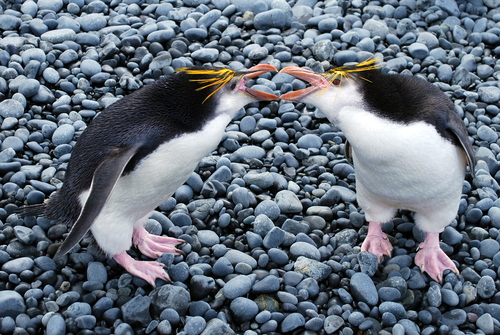
Royal Penguin
The Royal Penguin, with its striking yellow-orange crest, thrives on Macquarie Island's rocky shores. Known for their sociable nature, they gather in vast colonies. Feeding on krill and fish, they are vital to the marine food web, embodying the dynamic Antarctic ecosystem.
15-20 years
Lifespan
45357.0 kg
Weight
Height: 60 - 68 cm
Size
Grey, Yellow, Black, White
Color
Least Concern
Conservation Status
Unknown
Population Trend
Characteristics
Eudyptes schlegeli, known as the Royal Penguin, is found on Macquarie Island and nearby areas. Distinguished by a distinctive yellow-orange crest, these penguins are social and breed in large colonies. They primarily feed on krill, fish, and squid, playing a crucial role in the marine ecosystem.
Distribution Range of the Royal Penguin
Eudyptes schlegeli, commonly known as the Royal Penguin, is native to the subantarctic region, specifically Macquarie Island and its surrounding islets, which are part of Australia. These islands are located in the southwest Pacific Ocean, roughly halfway between New Zealand and Antarctica.
Royal Penguin's Habitat
Environmental Conditions
The Royal Penguin inhabits coastal and subantarctic environments characterized by cold, windy, and often wet conditions. Macquarie Island has a tundra climate with cool temperatures year-round, high precipitation, and frequent strong winds. The island's terrain includes steep cliffs, tussock grasslands, and rocky shores.
Ecological Niche
Royal Penguins primarily breed on rocky beaches and slopes where they form large colonies. They rely on the surrounding ocean for feeding, primarily preying on krill, small fish, and squid. The species is adapted to marine life, spending a significant amount of time at sea outside the breeding season. Their ecological role includes being both a predator of small marine organisms and prey for larger marine predators like seals and orcas.
Copyright @ Nature Style Limited. All Rights Reserved.
 English
English